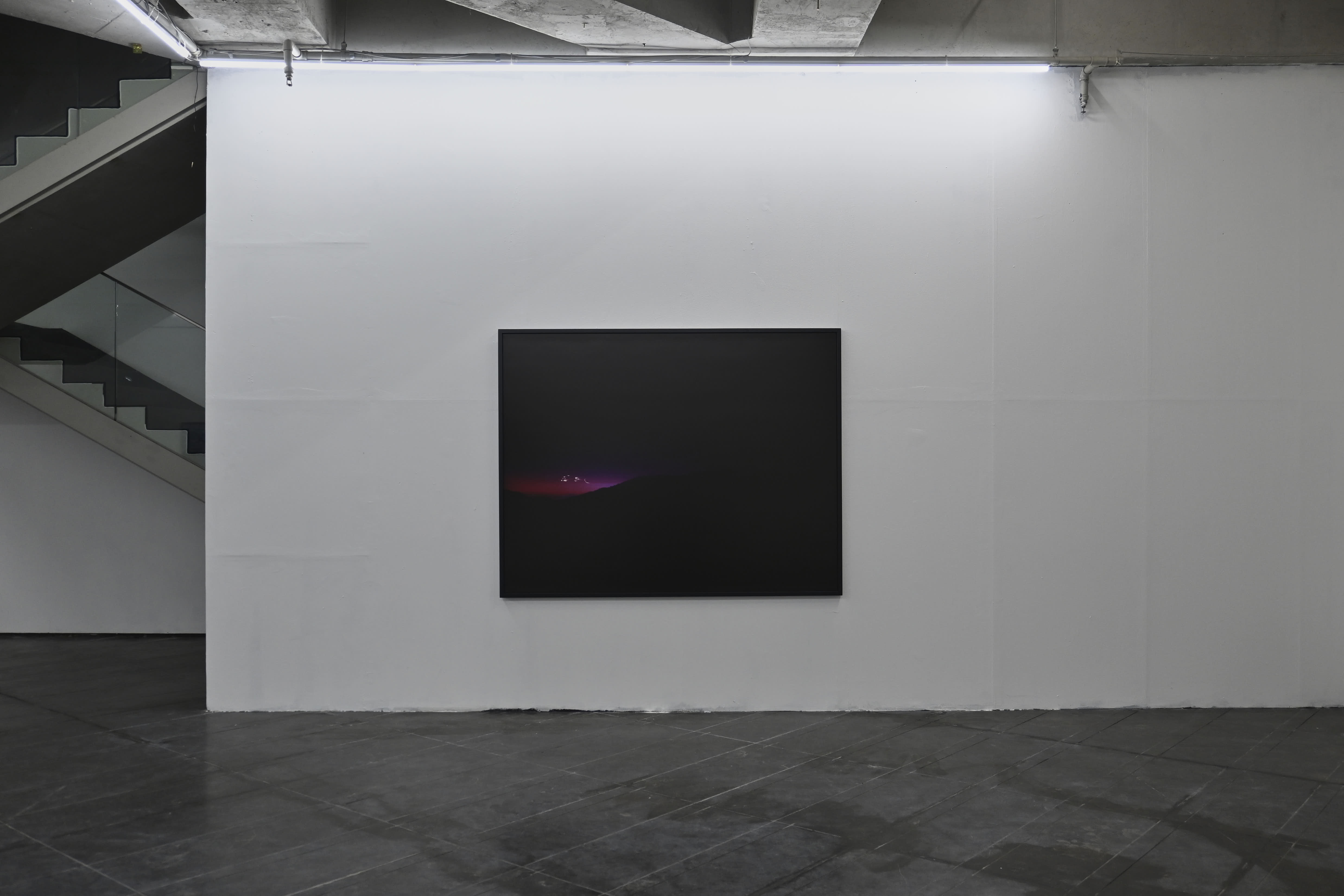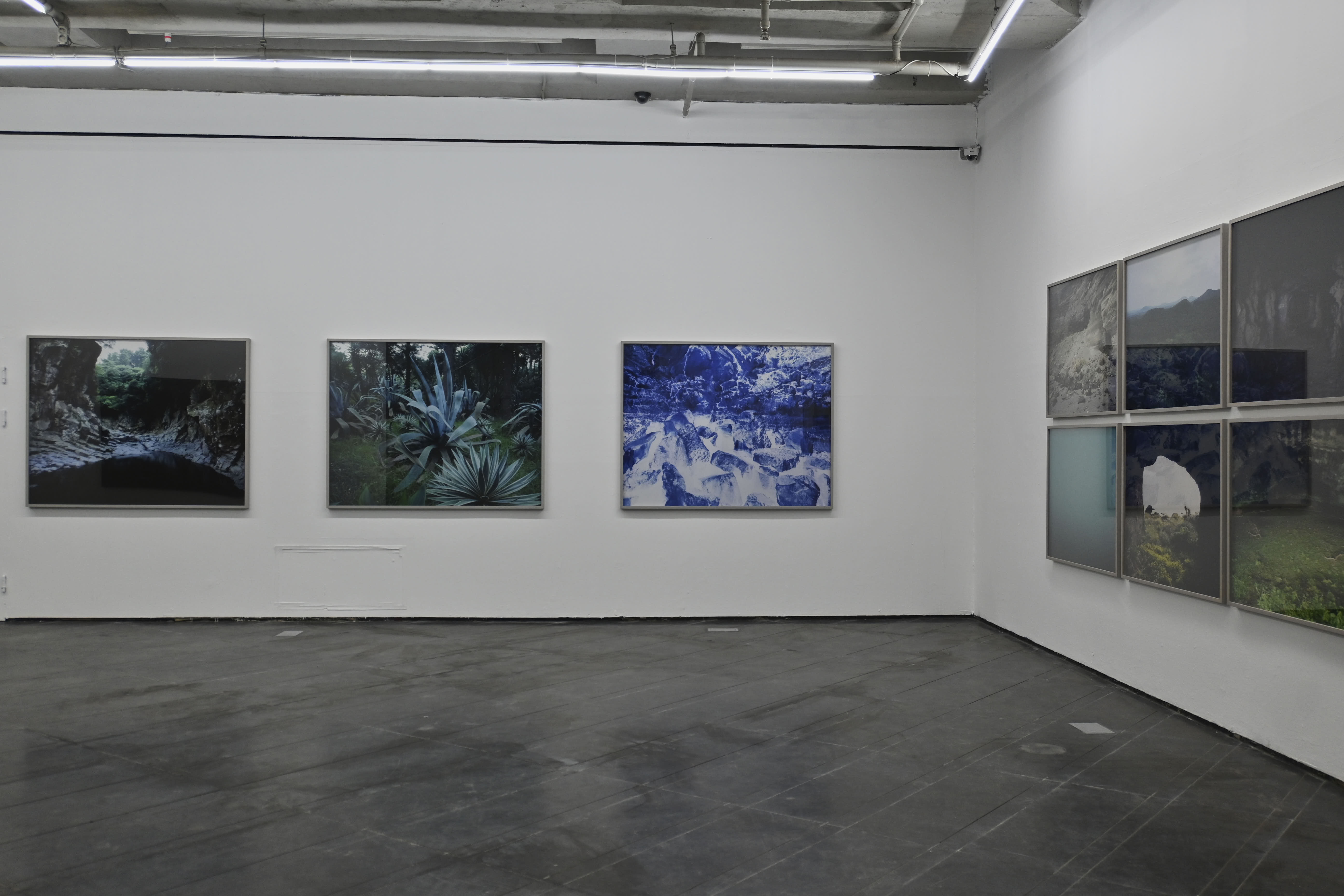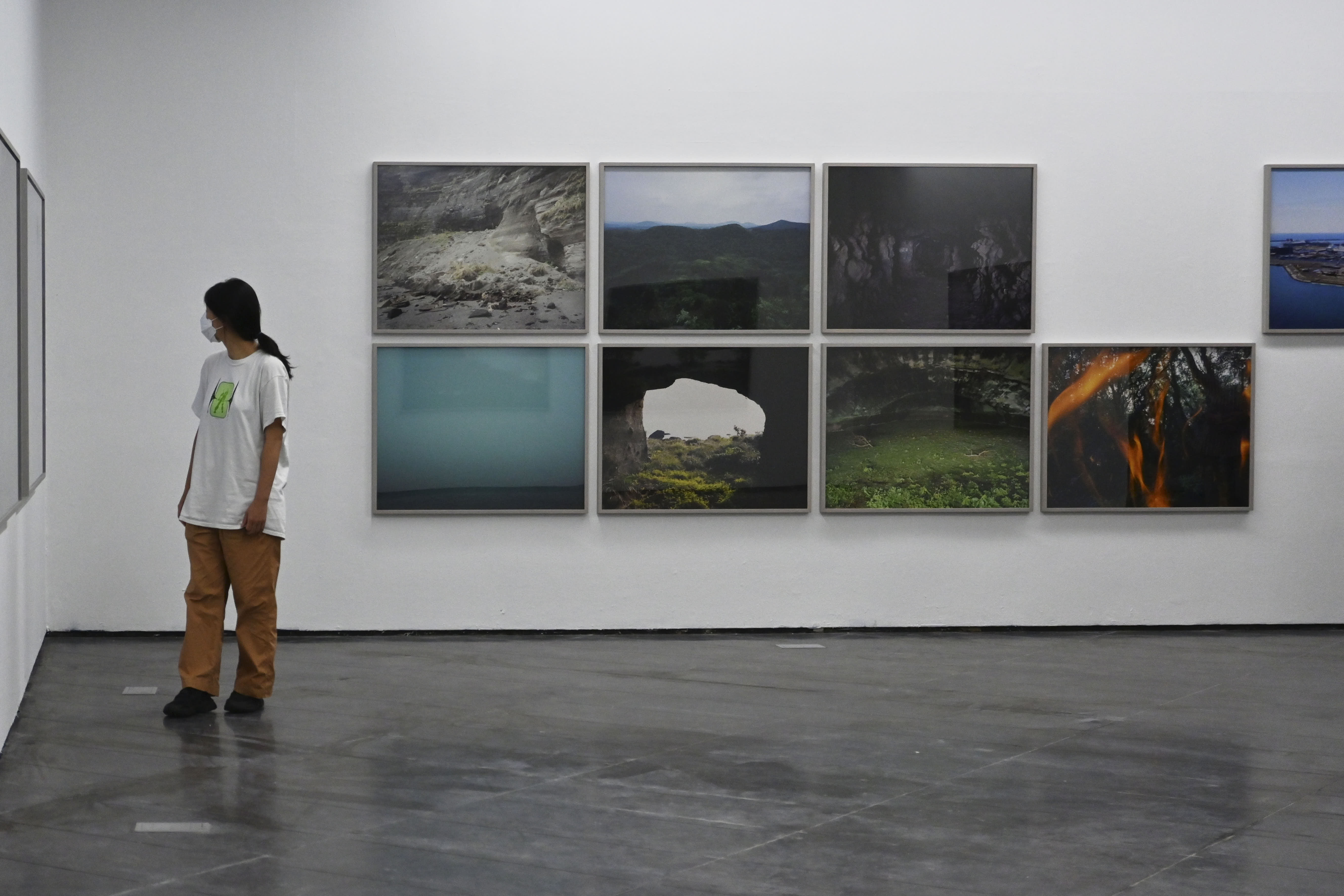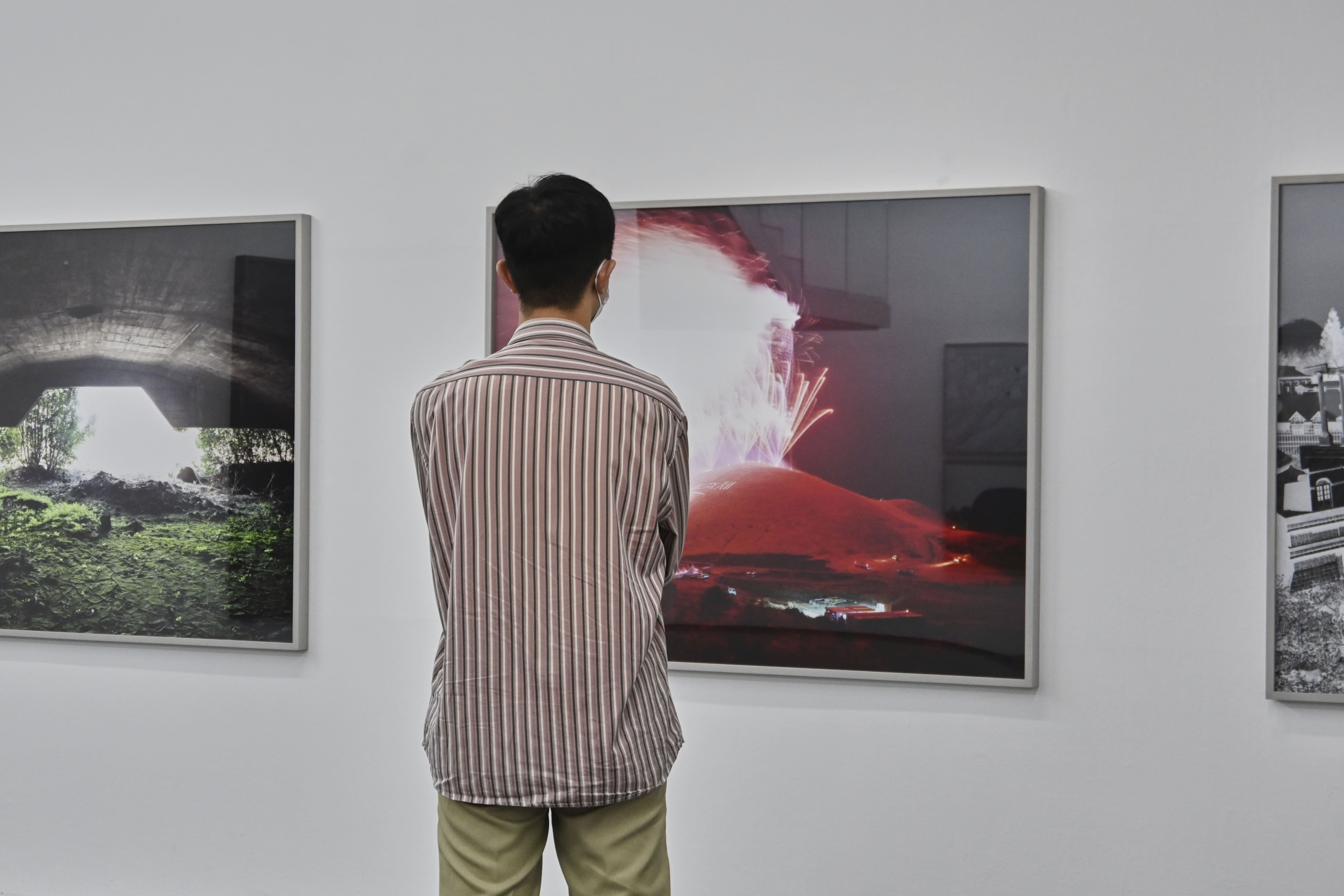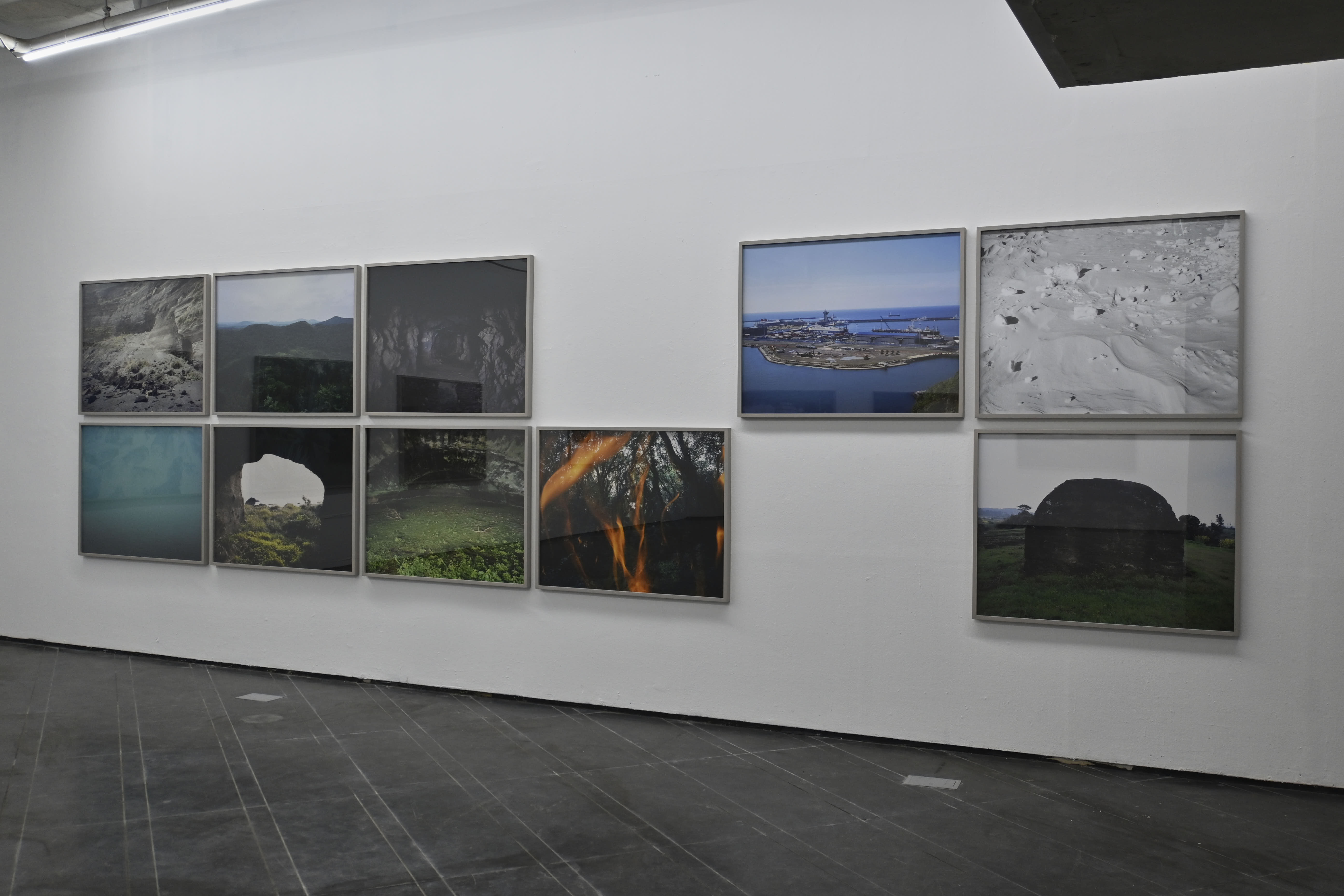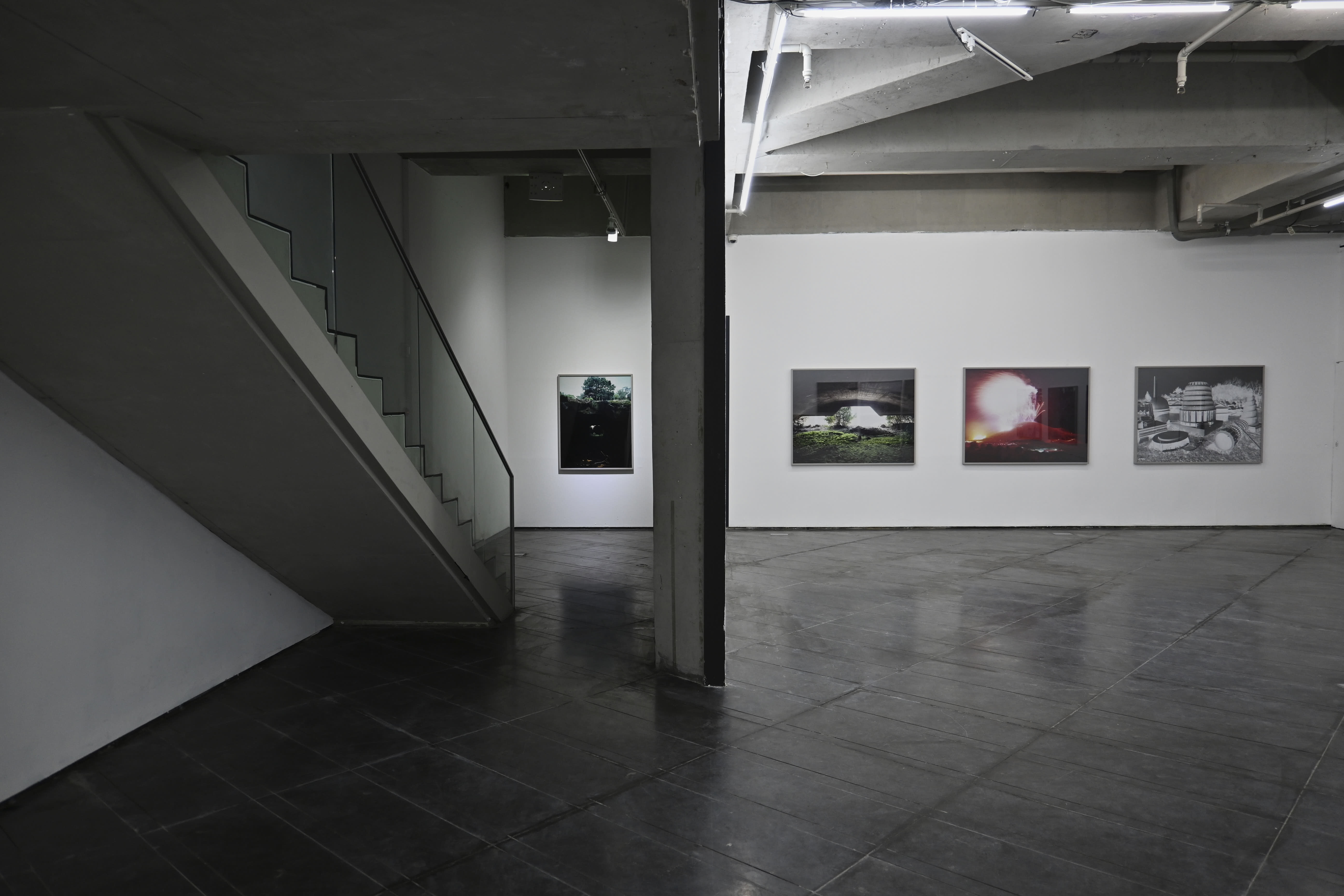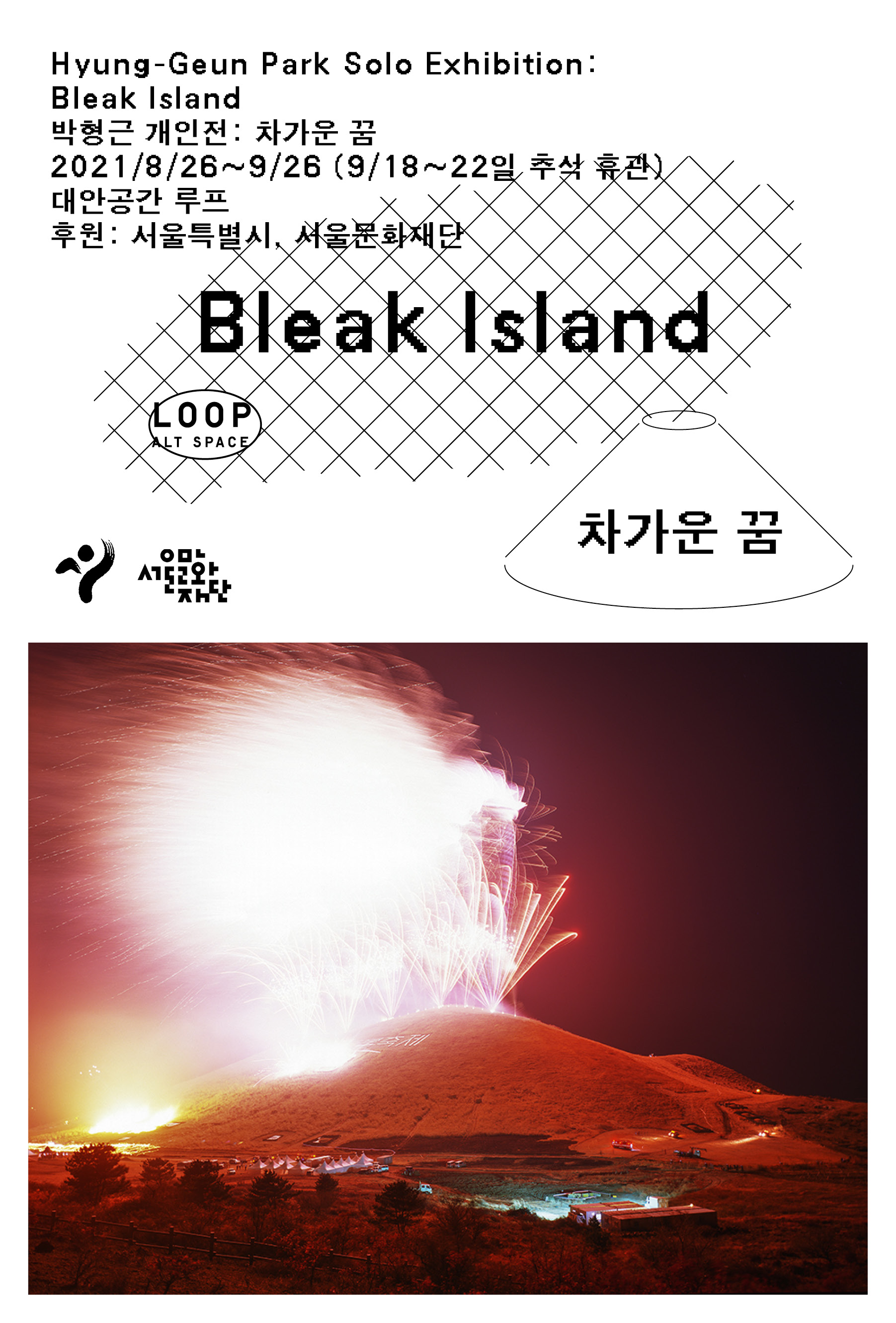Hyung-Geun Park Solo Exhibition: Bleak Island
-
Closed on Sep 18th(Sat) - 22nd(Wed), 2021
-
Organized / Presented by Alternative Space LOOP
-
Sponsored by Seoul Metropolitan Government, Seoul Foundation for Arts and Culture

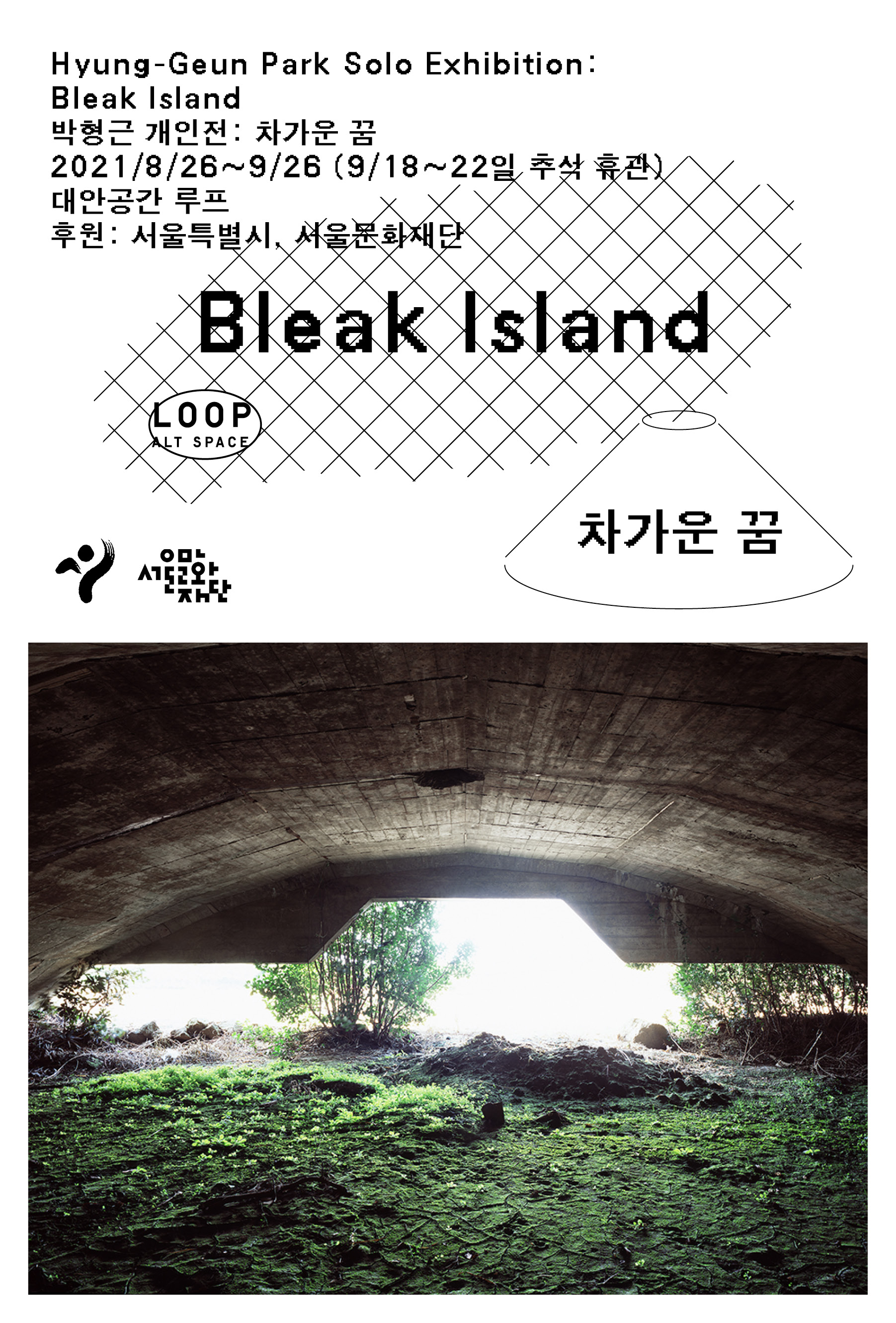
Hyung-Geun Park Solo Exhibition: Bleak Island
Closed on Sep 18th(Sat) - 22nd(Wed), 2021
Organized / Presented by Alternative Space LOOP
Sponsored by Seoul Metropolitan Government, Seoul Foundation for Arts and Culture
박형근 개인전: 차가운 꿈
휴관:2021년 9월 18일(토) - 22일(수), 추석 연휴
주최/주관: 대안공간 루프
후원: 서울특별시, 서울문화재단
Hyung-Geun Park, born and raised in Jeju, began revisiting the island’s oreum, beaches, valleys, and caves in 2005. Over seventeen years, he has documented Jeju’s various surfaces with a large format camera. In the process, he came to realize that these superficies were in fact the traces of the island’s history over the last hundred years. “Nature granted by the heavens” is how Jeju is usually described, eliding how in fact it was the malfunctioning regional history of the last century that molded the island and its terrain.
Darangshi (2008) resembles the ruddy surface of Mars. This is the location of a massacre that took place during the Jeju 4.3 uprising in 1948. When eleven residents of the village who took refuge in the cave refused to come out, a fire was lit at its mouth to asphyxiate them. The Darangshi village was wiped out entirely and the bodies were only found in 1992. Here and there amid the barren-looking oreum of Darangshi stand eleven buildings with domed roofs, looking out of place and reminiscent of temporary bases erected on Mars. These are the remains of a defunct pension industry. The 4.3 incident and real estate development for the tourism industry together continue to shape Jeju’s landscape.
Ilchulbong (2010) is a photograph of a cave fortification dating back to the Japanese colonial period. The white world outside the dark cave partly resembles an unknown paradise, but in fact the history that lies outside the frame of this photograph is the opposite of paradisical. During its colonization of the Korean peninsula, Japan turned the entire island of Jeju into a fortress. With 60,000 members of the Japanese Imperial Army stationed there towards the end of the Pacific War, the island was made to serve as a strategic base from which they could prepare to battle the U.S. Army. The seaside caves Park and his friends would play in as children were not natural caves, but blasted fortifications made by the Japanese. Dodu (2015) records the sea surrounding Jeju. Its blues, dark greens, and greys merge with the sky and are cloaked by a limitless fog. Park calls the sea around Jeju “the sea of surveillance.” Jeju’s modern and contemporary history was always veiled and opaque as well as unforeseen, and the dark waters around the island itself surround it in layers of mystery. As Park states unequivocally, “the romantic Jeju landscape is a fiction.”
Park’s photographs ask what reality lies beyond the visible surfaces of Jeju. Through his work we find ourselves constantly inferring and imagining the world and the history traced on the verso of the island’s visible surface. They help us imagine, through the images that capture remnants of what was, the historical moments that no longer exist. Park’s photos are not chronological but instead capture certain moments in time from year to year. His camera documents the rapidly changing terrain of Jeju as developed and manipulated by various interested parties.
In Saebyeol Oreum (2012) Park photographed Jeju’s annual Deulbul Festival, which takes place in March. Historically, bush fires were lit around the time of the first full moon of the lunar year, Jeongwol daeboreum, primarily to prevent and control diseases and pests where livestock such as horses grazed. This folk tradition is recreated every year now as a festival sponsored by the City of Jeju, which designated this heritage a tourist attraction in 1997. In the photo, big fireworks light up the sky above Saebyeol Oreum, beneath which one can make out the glow of words spelling ‘Festival’. A few firetrucks are on standby, dotted around the foot of the oreum.
From 1999 to 2004, Park worked on The Second Paradise, a series calmly documenting a Jeju increasingly overrun by tourist attractions. This exhibition at LOOP, Bleak Island, showcases the series of photographs taken from 2005 on. These somewhat theatrical works might fall between landscape and narrative photography. Through these captured images, Park explores the fraught social and political issues that underlie Jeju’s visible landscapes.
Written by Ji Yoon Yang
Director, Alternative Space LOOP
Translated by Emily Yaewon Lee
제주에서 태어나고 자란 박형근은 2005년부터 오름, 바다, 계곡, 동굴을 다시 찾기 시작한다. 이후 17여 년 동안 제주의 표면을 대형 카메라로 기록하면서, 깨닫게 된 사실이 있다. 제주의 표면이 100여년간 근대사의 흔적이었다는 사실이다. ‘천혜의 자연’으로 불리는 제주의 표면은 실은 근대사의 오작동이 빚어낸 흔적이었다.
‹다랑쉬(2008)›는 화성의 붉은 표면 같아 보인다. 이곳은 1948년 4.3 사건 당시 굴 속에 숨어있던 마을 사람 11명이 나오지 않자, 그 입구에 불을 피워 질식사를 시켰던 집단 학살의 현장이다. 다랑쉬 마을 전체는 사라졌고, 1992년에서야 시신을 발견한 그곳이다. 척박해 보이는 다랑쉬 오름 사이로 마치 화성의 기지 마냥 둥근 지붕을 한 건물 11채가 생뚱맞게 놓여있다. 이제는 운영을 하지 않은 펜션 산업의 잔재다. 4.3 사건과 관광업을 위한 부동산 개발이 나란히 제주의 표면을 만든다.
‹일출봉(2010)›은 일제 강점기에 만든 진지동굴을 촬영한 사진이다. 어두컴컴한 동굴 밖 새하얀 세상은 미지의 파라다이스를 연상시키는 듯 하지만, 사진 밖 역사는 그 반대다. 일제강점기 일본은 제주의 전 지역을 요새화했다. 태평양 전쟁 말기 제주는 일본군 6만 명이 주둔하며 미군과의 결전을 대비하던 전략적 기지였다. 작가가 어릴 적 친구들과 놀던 해안가 동굴은 자연 동굴이 아닌, 일본군이 뚫어 놓은 진지동굴이었다. ‹도두(2015)›는 제주를 에워싼 바다를 기록한 작업이다. 푸른색과 짙은 초록색, 회색의 바다와 하늘은 경계 없이 끝없는 안개에 뒤덮여 있다. 박형근은 제주의 바다는 ‘감시의 바다’라 말한다. 한 치 앞을 내다볼 수 없었던 제주의 근대사, 어두운 바다가 제주를 첩첩이 에워싸고 있다. ‘낭만적인 제주 풍경은 허구’라고 작가는 잘라 말한다.
박형근의 사진은 제주의 표면 너머 어떤 현실이 있는지 질문한다. 그의 사진에서 우리는 끊임없이 표면 이면의 세계와 역사에 대해 추론하고 상상한다. 더 이상 실재하지 않는 역사의 순간을, 그 남겨진 흔적을 포착한 사진을 통해 상상할 수 있도록 돕고자 한다. 그의 사진은 시간의 흐름이 아니라, 시간의 어느 순간을 연도별로 포착한다. 그의 카메라는 각각의 이해에 따라 제주의 표면이 빠르게 변화하는 과정을 기록하고 있다.
‹새별오름(2012)›은 매년 3월 이곳에서 행하는 제주 들불축제를 대형 카메라로 기록한 사진이다. 과거 제주에서는 말 같은 가축의 방목을 위해 병해충을 방제하는 목적으로, 정월대보름 즈음 오름에 들불 놓기를 했다. 제주 고유의 민속 행사는 1997년부터 제주시가 주관하는 관광 축제로 재현되고 있다. 거대한 폭죽이 터지는 듯한 새별오름 사진 속 현장에는 ‘축제’라는 글자가 불빛에 번쩍인다. 아래에는 소방차 몇 대가 소박하게 대기 중이다.
1999년부터 2004년까지 박형근은 ‹The Second Paradise› 연작을 진행하면서, 관광지화 되어 가는 제주의 모습을 담담하게 기록한 바 있다. 이번 전시 ‹차가운 꿈›은 2005년부터 새롭게 제주를 촬영한 연작이다. 연극적으로 보이는 그의 사진은 풍경 사진과 내러티브 사진 중간에 위치해 있다. 작가는 제주의 풍경에 담긴 사회적이고 정치적인 이슈를 사진이라는 하나의 포착한 이미지로서 탐구한다.
글: 양지윤, 대안공간 루프 디렉터
박형근(b. 1973-)
제주에서 태어나고 자랐다. 런던 골드스미스컬리지 대학원에서 시각 미술 이후 이미지 앤 커뮤니케이션을 전공했다. 1999년 첫 개인전 이후 영국 New art gallery Walsall 미술관(2006), 금호미술관(2006), 제주현대미술관(2011), 이탈리아 Paola Meliga Galleria d’Arte(2014), 경기창작센터(2015), 이상원미술관(2016) 등 22회의 개인전을 가졌다. 파리 포토케이비엔날레(2015), 그리스 아테네국립현대미술관(2021), 국립현대미술관(2016), 포토페스트비엔날레(2006), 대구사진비엔날레(2006), APAP(2010), 휴스턴현대미술관(2009), 대안공간루프(2006) 등 국내외에서 170여 회의 주요 단체전에 참여했다. 금호영아티스트(2006), 제 9회 다음 작가상(2010)에 선정됐고, 프랑스 케브랑리박물관, 뉴욕 조지이스트만미술관, 휴스턴현대미술관 등에서 작품소장하고 있다. 작가는 한국현대사를 표상하는 장소와 대상에 대한 기록 작업에 문학적 상상력을 결합시켜 정치, 사회, 역사적 상황에 대한 의미 있는 연작들을 지속적으로 발표하고 있다.








